Saddle sores.
At some time in our cycling lifetime, each one of us will be visited by this demon that lurks in the darkness of our chamois. Steeped in tales of horror, deeply personal and sometimes utterly disgusting, this little pest can derail the most dedicated of cyclists, grinding their riding, training and racing to a complete halt. To top it off these devils are often incredibly difficult to treat and get rid of.
There may be many causes of saddle sores, plenty of confounding elements, and a lot of closely inter-related issues behind the development of one of these pests, and you have to look at each and every one of those aspects if you want to finally be free of that pimple on your nether regions.
That being said, let's delve into your shorts and see what's cooking (or boiling, as it may be.)
What Are Saddle Sores and Who Gets Them?
The simple answer is that a “saddle sore” is any kind of skin injury in the nether regions. In reality, this could be any number of ailments from generic soreness of the ischial tuberosities (sit bones) to specific things like chafing, localized skin and follicular (hair) infections and open sores. For example, follicular infections are very similar to pimples, while chafing would be similar to rug burn or floor burn.
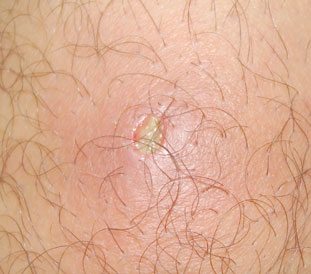 Yes, those same pus-filled red bumps that made your teenage years hell have returned for a second attempt at ruining your life. This time, they're a lot harder to get rid of. Typically small and isolated, these can be extremely painful and keep you off the bike for several days to several weeks, especially if they become infected and turn into larger boils. This happens because we all have bacteria on our skin, and when they find a cozy place to set up shop and breed, you can end up with an oozing, pus-filled mess. That pimple or boil can ruin your training and racing, and preventing them can save you a lot of headaches later on.
Yes, those same pus-filled red bumps that made your teenage years hell have returned for a second attempt at ruining your life. This time, they're a lot harder to get rid of. Typically small and isolated, these can be extremely painful and keep you off the bike for several days to several weeks, especially if they become infected and turn into larger boils. This happens because we all have bacteria on our skin, and when they find a cozy place to set up shop and breed, you can end up with an oozing, pus-filled mess. That pimple or boil can ruin your training and racing, and preventing them can save you a lot of headaches later on.
Chafing type saddle sores are generally a result of poor fitting shorts, seams that rub, poor saddle position or a lack of lube in your chamois. They are often larger areas, feel almost like a sunburn and can be terribly painful if allowed to progress. In contrast, general sit bone soreness typically results from a poor bike fit, spending a lot of time in the saddle over really rough terrain or just sitting too long, all of which can result in tissue compression and breakdown.
As for figuring out who is vulnerable and who isn't keep in mind that saddle sores are non-discriminatory. They strike young and old, male or female, amateur or professional without provocation or distinction. That TUE for Cortisone that Lance had back in '99? Supposedly for a saddle sore. Remember Tom Boonen's little “saddle issue” last year that forced him to retire from the Vuelta and miss Worlds? Well, that was allegedly a hole in the back of his scrotum as a result of a bad saddle sore.
With that pleasant visual out of the way, here are a couple ways to help make sure you don't lose saddle time to a nasty boil.
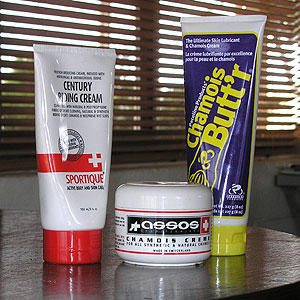 How to Prevent Saddle Sores
How to Prevent Saddle Sores
According to Ben Franklin, “an ounce of prevention is worth a pound of cure.” While this may not necessarily bode well for the doctor's bottom line, it does for yours, and for your mileage account as well. After all, nobody wants to be off the bike for two weeks, only to return and have to answer questions about “why weren't you at the last group ride…” How awkward is that to explain to your riding buddies, unless of course, you take get smug satisfaction in watching their disgusted faces while you graphically discuss your tender bits' ailments. If that's the case, then by all means, go for it. But if answering questions about what's going down below doesn't appeal to you, try to prevent saddle sores with these tips:
Get A Proper Fit
This will be beneficial in preventing pretty much all kinds of saddle sores (as well as many other ailments like back and neck pain.) For example, if your saddle is positioned too high, your hips will rock with each pedal stroke and rub your sensitive undercarriage across the saddle with each pedal revolution. Pressure points will also develop on the sit bones where they rock on the saddle, leading to further soreness. A bike fit can remedy those positional issues before they develop into a nasty saddle sore and keep you off the bike for a while.
Get Out Of The Saddle More Frequently
Standing up and lifting your butt off the saddle not only relieves the pressure in your tissues and lets them “spring” back a bit, but it restores circulation that can be cut off by long periods in the saddle. Small hills, the back of the paceline, rolling away from a stop sign and the like are good places to stand up for a few moments and not only stretch your legs but give your rear end a slight reprieve. You should make it a point to get out of the saddle every 10 to 15 minutes on any given ride.
Move Around On The Saddle
This applies more for those of you who are stuck on the indoor trainer during the winter months. The indoor trainer is very static and most folks tend to plop down and stay there. Moving around allows pressure to be relieved from tissues and restores circulation, and it also prevents constant pressure buildup and the creation of “hot spots” on your butt. You can also consider investing in a [easyazon_link identifier=”B000BT8VPG” locale=”US” tag=”taicoaandthed-20″]set of rollers[/easyazon_link] or a trainer like the [easyazon_link identifier=”B00FMRYMGO” locale=”US” tag=”taicoaandthed-20″]Kurt Kinetic Rock ‘N Roll[/easyazon_link] that forces you to move and maintain your balance.
If you're riding outdoors, you should be moving around on the saddle plenty often. Bumps, corners, rough roads and simply sliding around on the saddle to find a little more power or comfort is the norm. You shouldn't need to move around on the saddle more to distribute the load.
Find A Better Chamois
If the shorts you're wearing don't feature a one piece chamois, it's time to re-think your shorts. Modern clothing manufacturers use a variety of advanced fabrics, and the best bibs or shorts come with a single piece chamois. These single piece units reduce stitching (which can rub and chafe) and tend to conform to the body better (creating less pressure points.) When shopping for new shorts or bibs, look for a one piece chamois with flat lock seams and the fewer the better. Size is also important to consider: thicker isn't often better and don't be afraid of trying a bunch of different shorts or bibs in the quest for the perfect chamois.
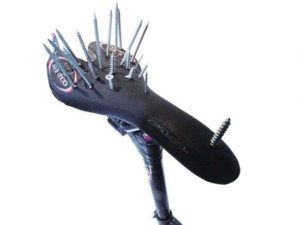 Find A Saddle That Fits
Find A Saddle That Fits
Saddle fit is a very independent, personal thing. Saddles that are too wide can chafe the insides of your thighs. Saddles that are too narrow will eventually be termed “the grundlemuncher” in honor of what they do to your perineum over the course of longer rides. It's worth noting that women generally use a wider saddle (because of a wider pelvis and wider spaces sit bones) than men, but a qualified fit specialist can certainly help you find out which width you should look for. Finally, expect that finding a comfortable saddle could be a long process: rarely is the first one tested the best one for you.
Consider Using Chamois Cream
A good quality chamois cream can prevent rubbing and chafing and some of them even have additives like witch hazel and tea tree oil that have antibiotic properties and can help prevent nasty bacteria from setting up shop in your pores. It also provides a slick surface that can prevent chafing and rubbing, reducing the potential spots where nasty little bacteria can make their home. It shouldn't take much to protect against chafing either: a quarter sized dollop of chamois cream is all you need to prevent friction. My personal favorite chamois creams are [easyazon_link identifier=”B001C69L6K” locale=”US” tag=”taicoaandthed-20″]Chamois Buttr Euro Style[/easyazon_link] and [easyazon_link identifier=”B001C6DIF0″ locale=”US” tag=”taicoaandthed-20″]DZNutz Chamois Cream[/easyazon_link]
Get Out Of Your Used Shorts Quickly
After a ride, not only is sitting around in a clammy chamois disconcerting (it can be described as similar to wearing a wet diaper) it can also lead to saddle sores. Strip off those nasty shorts and clean up your crotch with baby wipes or something similar. When you get home, immediately wash up with antibacterial soap to keep the offending germs on their toes. Wash your shorts soon as well, and ALWAYS wear fresh shorts on your next ride (if you make a habit of wearing dirty shorts, don't be surprised if you're suddenly left to ride all by your lonesome; nobody wants to ride with/behind that stank.) Unwashed shorts are a breeding ground for all kinds of nasty things that you really don't want floating around on your skin.
Wear Proper Fitting Shorts
I can't tell you how many rides I've been on where people's shorts are sagging, where they are bunched up in places and even where they talk about “their junk bouncing around all over the place.” I don't care if you've lost 50 pounds in the last 3 months and your $300 Assos bibs are now a size too big. Congratulations, that's a huge accomplishment and you deserve a new pair of shorts that actually fit. I can't belabor this point any more: all of the advice I've given you above can be rendered completely useless if your shorts just don't fit. Really, there's NOTHING worse in the cycling world than ill fitting shorts. They're a one way ticket to chafing, infection and hole-in-your-scrotumville.
How to Treat Saddle Sores
So, even with the best of intentions and the most diligent precautions, you get off the saddle one day with a sore crotch and a nice infected pustule on some part of your undercarriage. How do you get rid of it fast? Well, by and large, the best treatment for a saddle sore is to remove the offending activity and stay off the saddle. If staying off the saddle isn't an option, and/or you want to really speed up the healing process, you'll want to use things like over the counter acne gels, tea tree oil and astringents to dry it up and send the bugs packing.
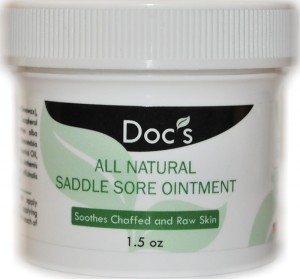 But what about those of you who are determined to rack up mileage, and hole-in-your-scrotumville be damned? Well, consider the following treatments:
But what about those of you who are determined to rack up mileage, and hole-in-your-scrotumville be damned? Well, consider the following treatments:
Change your shorts and/or saddle
This is generally one of the first things you'll want to try. Chances are it will take you a while of testing saddles to find one that's comfortable and doesn't destroy your body. If you've got a pretty comfortable saddle already, try a different pair of shorts for a little while and see if that helps to alleviate the pressures that caused the saddle sore in the first place.
Use heavier lube or try a little more chamois cream
Lube up that sore like your life depends on it. If in doubt, you may even resort to a slight smear of [easyazon_link identifier=”B00FNKXZLI” locale=”US” tag=”taicoaandthed-20″]Bag Balm[/easyazon_link] or vaseline to keep the friction off your sore. Some lubes on the market are designed to treat the sore as well as keep it friction free, so you may want to try one of those.
Numb it up
While it won't help to heal the sore, per se, it will make riding with it tolerable. Using pain relievers and anti-inflammatories like ibuprofen or topical anesthetics can make riding tolerable. Even Preparation H, smeared on the saddle sore can help reduce the inflammation and numb it a bit. Just be careful: too liberal an application could result in unpleasant side effects.
Donut it up
You know [easyazon_link identifier=”B016R0KEDO” locale=”US” tag=”taicoaandthed-20″]those stick on donut pads[/easyazon_link] that are used for foot corns? They'll work for a saddle sore too, and they come in a variety of sizes for even the worst saddle sores.
Use natural anti-biotics
Things such as [easyazon_link identifier=”B00QJCFWSI” locale=”US” tag=”taicoaandthed-20″]tea tree oil[/easyazon_link], [easyazon_link identifier=”B00027DDOQ” locale=”US” tag=”taicoaandthed-20″]salicylic acid[/easyazon_link] and [easyazon_link identifier=”B000VV0E90″ locale=”US” tag=”taicoaandthed-20″]witch hazel[/easyazon_link]can be applied to a saddle sore in order to help heal it up and get the bugs out of it. Simply mix all the goodies onto a cotton ball and swab the area two to three times a day. Soon enough, it'll start to dry up and disappear (just like a zit would.)
Other Saddle Sore Considerations
If for some reason you're dealing with a saddle sore for a long period of time or it seems to be getting worse, consider consulting a doctor. They may recommend oral antibiotics or other methods of helping to heal up a stubborn sore, including lancing and drainage. Of course, once you're all healed up, you may want to think about what circumstances led to the saddle sore in the first place and address them. If you don't you may find yourself discussing another oozing pustule with your riding buddies while they silently gag to themselves.
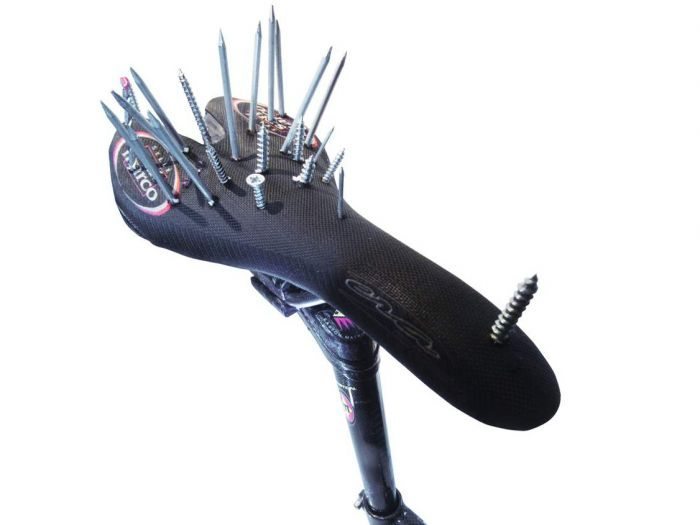
One thought on “Dealing With Saddle Sores”
Comments are closed.